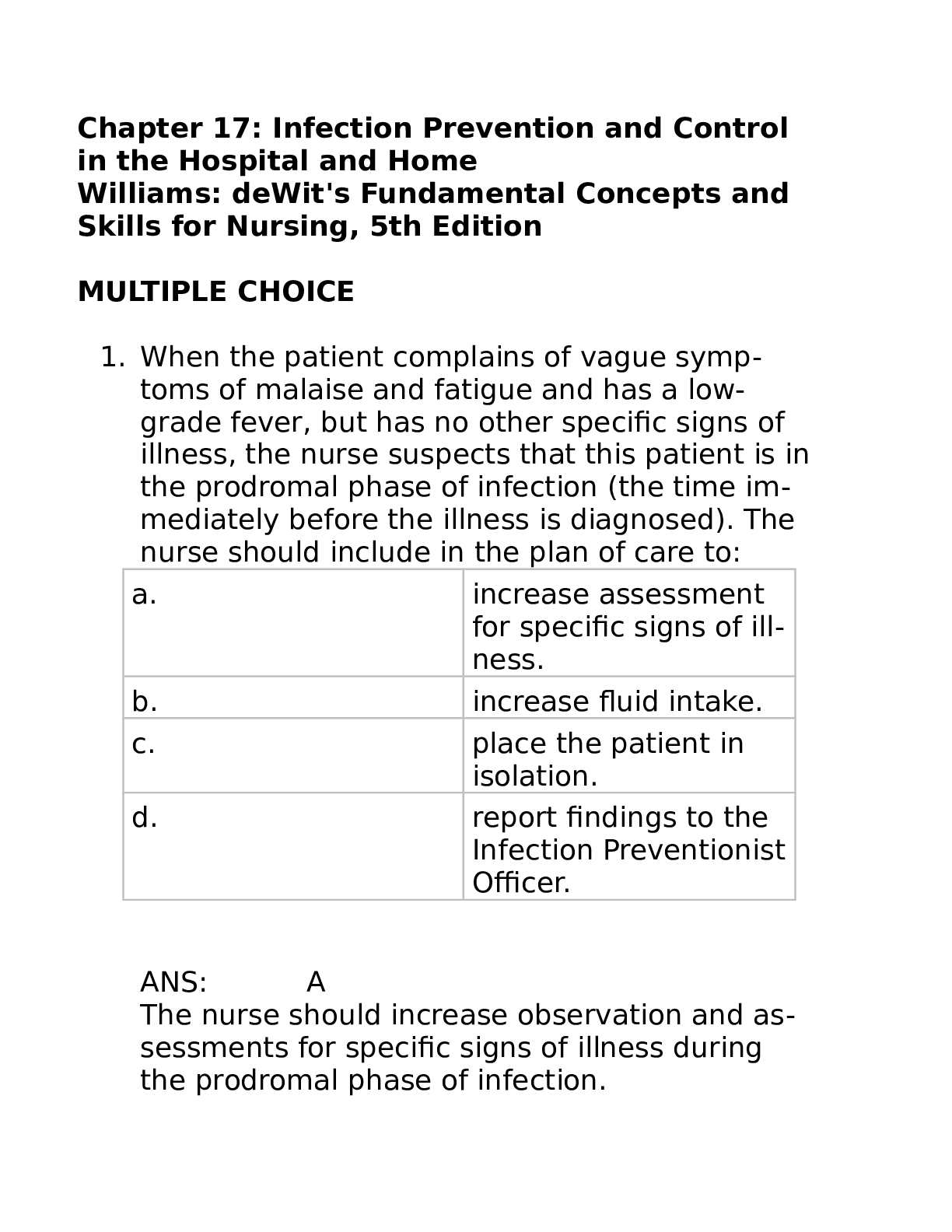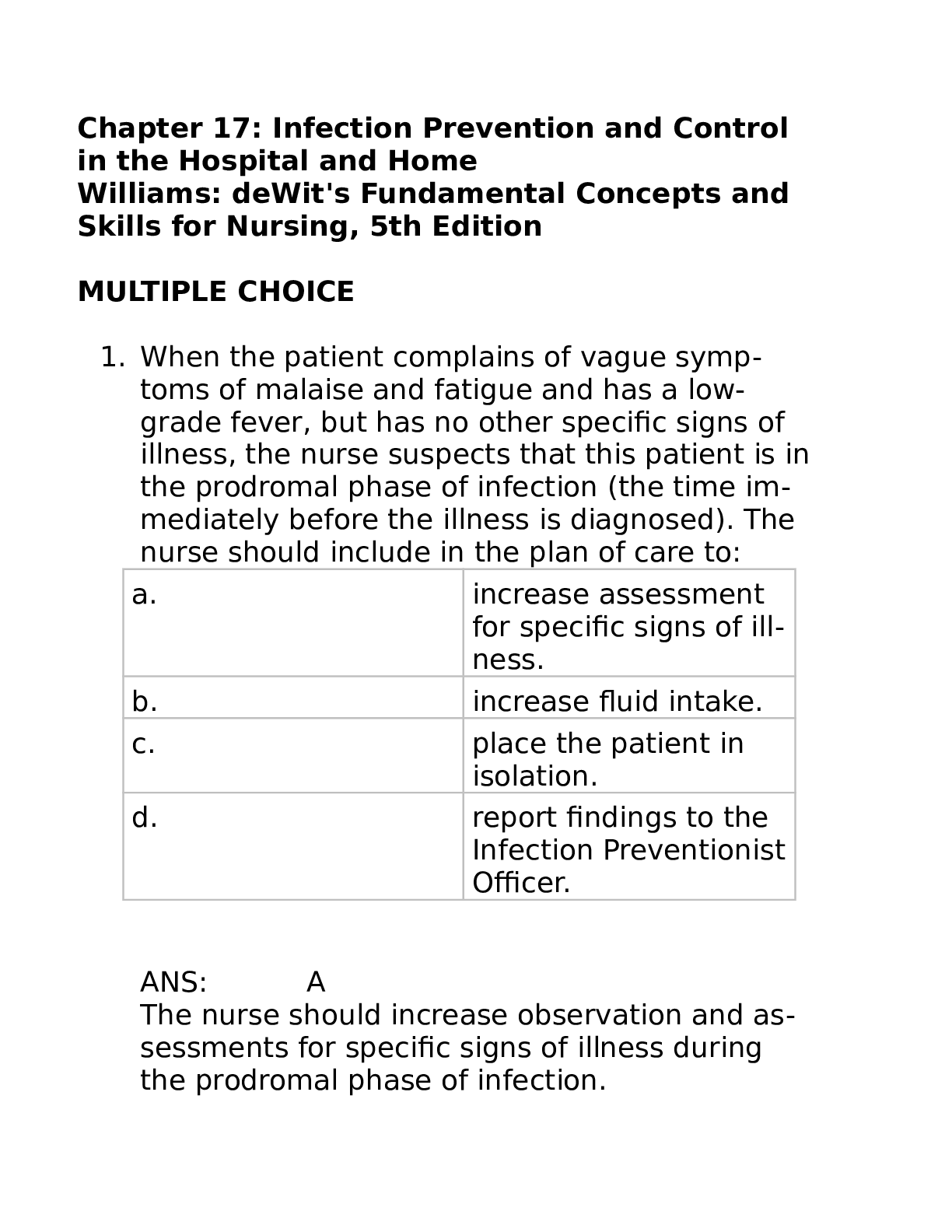Chapter 17: Infection Prevention and Control in the Hospital and Home
Course
Project Management
Subject
Chemistry
Category
Questions and Answers
Pages
44
Uploaded By
ATIPROS
Preview 5 out of 44 Pages


Download all 44 pages for $ 10.00
Reviews (0)
$10.00
